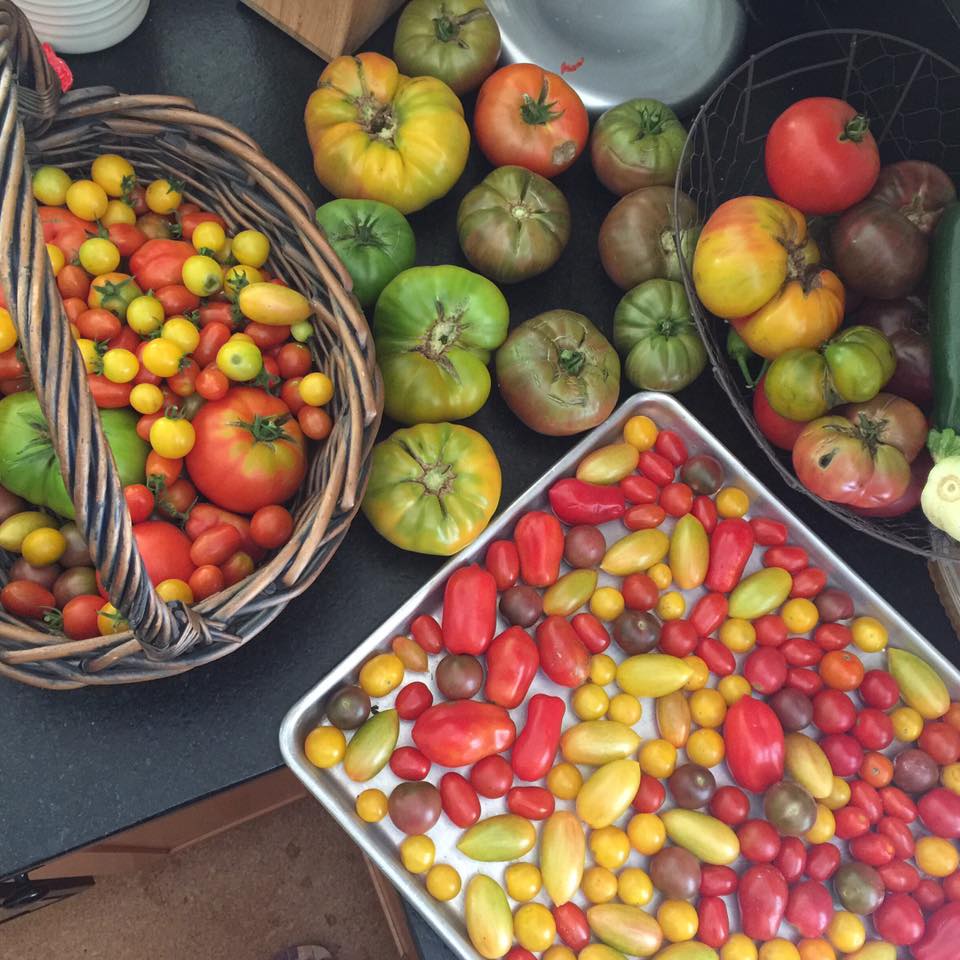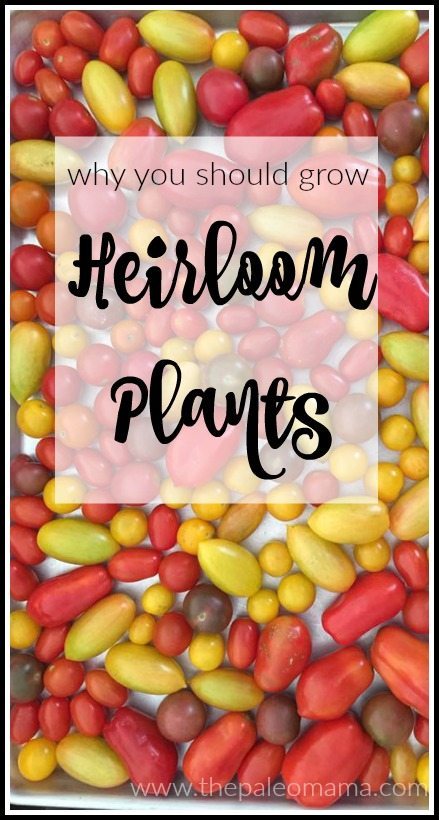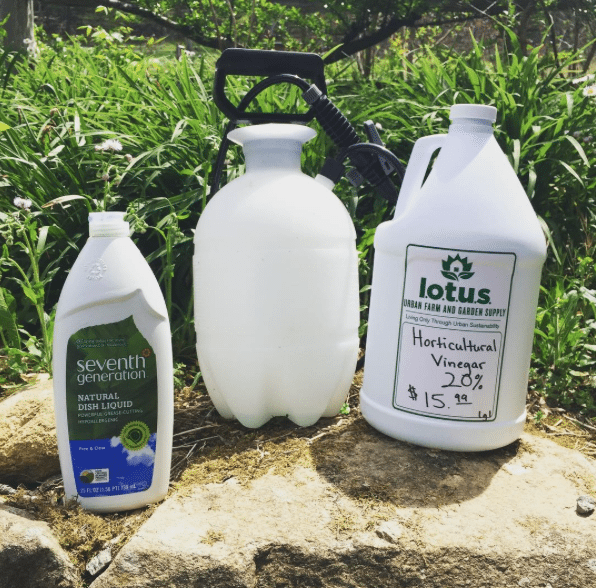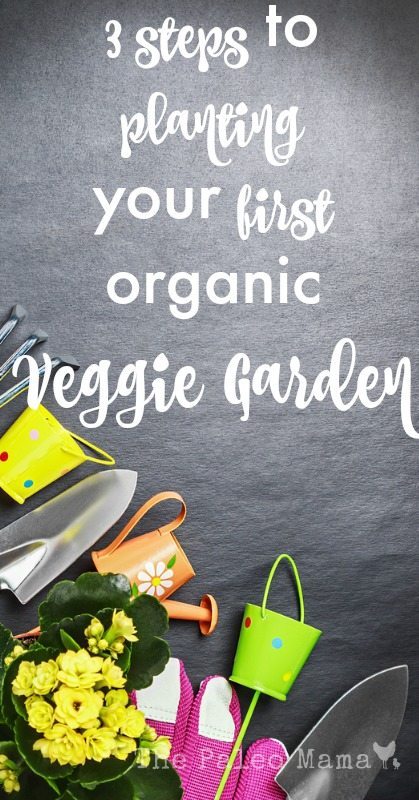Heirloom ingredients are making a comeback and not just in the produce aisle. Prized for flavors and traits that have been preserved for centuries, these “old-world” edibles are popping up in all kinds of packaged goods. Even better than that, homesteaders and heritage farmers around the nation are choosing to grow their own heirloom plants —and that means more than just tomatoes.
If you’ve followed me for any time, you know that our Gather Heritage Farm is committed to raising heritage animals, and heirloom plants and vegetables. I oohed and aahed over my wonderful garden plot of 10 different kinds of heritage tomato plants this last summer. But my gardens have been filled with more than just heirloom tomato plants this year—and I’m already planning on many more next year. I firmly believe that heritage animals and heirloom plants are the seeds of yesterday that will build a better tomorrow.
I want to introduce you to some of heirloom plants and vegetables that have become important to raise for many homesteaders and organic farmers around our nation. Let me begin with a simple definition of what an heirloom plant really is.
In short, heirloom is a designation for produce that hasn’t been crossbred with any other varieties for several generations (how many is a matter of debate, but at least 50 years tends to be a good rule of thumb) and hasn’t been genetically modified. Heritage is essentially the same thing, but for birds and animals. Plenty of people use the terms interchangeably [including me].[1]
Why Grow Heirloom Plants?
Growing heirloom plants is really more than just a trend—for many it’s a cause, a passion, and even considered a revolution by some. There are many reasons for this decision by many, including these:
- A desire to preserve and cherish seeds from generations past, sometimes within our own families. I don’t have seeds from my own ancestors’ gardens (I sure wish I did), but I cherish the 75 year-old seeds I now have from a San Marzano tomato that my 94 year old neighbor handed me when I invited him to share Thanksgiving dinner with us last year. He brought these tomato seeds home to his wife when he was serving in Italy during World War 2.
- There are some very practical reasons to use heirloom seeds. They possess a hardiness, disease and pest resistance that has grown over the generations of their existence, which makes them impervious to the things that kill our evolved, improved and genetically modified vegetables in big box supermarkets today.
- Another reason to grow heirloom plants is their adaptability to both climate and soil conditions. They have adapted to growing conditions and developed disease resistance over a long period of time. These are highly sought-after traits to us homesteaders and organic gardeners!
- However, there is another reason also—an aesthetic one! Give me the imperfectly colored, soft and squishy look of one of my UglyRipe tomatoes any day over the hard, flavorless, plastic tomatoes you buy in stores!
- The most important reason for growing heirloom plants and vegetables is the desire to preserve their biodiversity (the existence of a wide variety of the vegetables and plants). For example, one website lists 28 different types of heirloom tomatoes.[2] Things are different in the modern improved world of vegetables. As commercial growers have concentrated on perfecting just a few plants of any one type, many others varieties have gone extinct. The Millennium Seed Bank Partnership estimates that 60,000 -100,000 plant species today are threatened with extinction.[3]
Every gardener raising heirloom plants has his or her own reasons for doing so. Frank and I raise heritage animals and heirloom plants because it allows us to help preserve essential genetic traits, things like self-sufficiency, foraging ability, maternal instincts, and resistance to diseases and parasites. We believe that these plants and breeds store a wealth of genetic resources that are important for tomorrow.
You rarely get satisfaction sitting in an easy chair. If you work in a garden on the other hand, and it yields beautiful tomatoes, that’s a good feeling.
—Dan Buettner
What Types of Heirloom
Vegetables Are Available?
Many heirloom vegetables never make it to a seed catalog or become a food consumed by the average public consumer. These plants have been handed down by families, and often their spread goes no further than to a few family friends. Many heirloom vegetables look nothing like their improved counterpart in today’s supermarkets. But many heirloom plants and seeds are now becoming highly sought for by homesteaders and organic farmers. So I want to list a few of the heirloom vegetables that, although probably a bit strange looking and sounding, are available in online specialty websites.
- Magenta Sunset Chard—this is a beautiful species with dark green, almost flat leaves, and a magenta stalk.
- Dragon Tongue Bush Bean—it is a Dutch heirloom that has striking purple stripes mottled over a bright yellow color. They have a unique, clean, vibrant flavor.
- Weebee Little Pumpkins—these miniature pumpkins can easily fit into the palm of your hand. They have a sweet flavor, and are the perfect size for tea light candles.
- Sweet Chocolate Peppers—these peppers turn from green to a rich chocolate color as they ripen. They are very sweet in taste, and are a wonderful addition to salads.
- Violetta Italia Cauliflower—these ae stunning, large, bright purple cauliflowers. They are delicious raw, cooked, or steamed.
- White Scallop Squash—these are similar to the golden patty pan squash I had in my garden this year. They have a clean white color and a great taste. They can withstand most squash bugs and vine borers.
- Blue Hopi Corn—this is a dark blue, almost black variety of corn. It is an heirloom from the Hopi Native Americans who ate it as a staple food for thousands of years.
- Purple Majesty Potato—it has a bright royal purple color on both the outside and the inside. It makes very interesting purple mashed potatoes or purple chips.[4]
These are just a few of the kinds of heirloom vegetables you can find available in specialty seed outlets. I absolutely love and recommend Sow True Seed. This organic seed outlet is local to me but they do ship! Their seeds are ALWAYS open pollinated, non-GMO, and non-hybrid.
Why Not Consider Raising
Your Own Heirloom Veggies?

I encourage you to help preserve these awesome, generations-old, heirloom plants and vegetables. Not all heirlooms have the same wonderful flavor and hardiness if grown outside of their area of origin, so be sure you get some advice from your local gardeners as to which heirlooms are best suited for your region. It may even be possible to get some special seeds from heirloom growers in your area.
We have gotten our entire family involved in gardening and understanding the importance of heirloom plants. Gardening is a perfect family activity, and teaches cooperation and responsibility. Heirloom vegetables have amazing flavors—flavors of times past when food still tasted the way our grandparents remember. Why would you choose to eat flavorless foods if you can enjoy heirloom flavors?
Heirloom seeds aren’t just about gardening. Throughout the centuries they have been intricately linked with medicine, love, romance, exploration, discovery, and poisons. They have been part of history, science, cooking, literature, fairy tales, genetics, and wildlife. They are wrapped up in farming, travel, state fairs, archeology, philosophy, and so much more. When you plant heirloom seeds remember where they’ve been. Keep them going.
—Lynn Coulter, Gardening With Heirloom Seeds[5]
Now the Best—Cooking with
Heirloom Vegetables
Once you’ve tasted something made with the unparalleled flavor of heirloom veggies, I’m betting you will never go back to the boring supermarket flavors. I want to encourage you with a couple of great recipes—buy the heirloom veggie and try these recipes…you’ll definitely want more!
Heirloom Tomato Basil Caprese Salad
This is soooo good! And it requires no cooking, can be made in under 5 minutes, and really looks impressive when you serve it. See for yourself.
Ingredients
- 2-3 heirloom tomatoes, sliced ¼ inch thick (I recommend a ripe freshly picked one from the garden!)
- A big ball of fresh mozzarella, sliced thin (I use my homemade mozzarella, but you buy yours at the real cheese counter in your store, or from a farmer’s market
- Handful of fresh basil
- Olive oil
- Balsamic dressing
- Sea Salt
Directions
Arrange sliced tomatoes and cheese on a big plate, overlapping each one slightly. Sprinkle with salt, and let it sit a minute or so to get the juices going. Tear up a few leaves of basil and spread over the top. Drizzle balsamic and olive oil on top.
Mashed Purple Majesty Potatoes
You’ve probably seen these purple potatoes in your supermarket. They have begun appearing more and more. I highly recommend that you purchase them from a reputable organic, heirloom gardener if at all possible. Try making these purple mashed potatoes and watch your family chomp them down.
Ingredients
- 1 lb. purple majesty potatoes, washed
- 3-4 minced shallots (or green onions)
- 3-4 TBSP heavy cream (I use our raw milk cream)
- Fresh parsley
- Sea salt
- White or Black pepper
Directions
Cook your potatoes in a large pot of heavily salted water until tender, about 15-18 minutes. If desired you can peel them while still warm, but we prefer to leave the skins on. Gently mash the potatoes, leaving this a little bit chunky. Fold in the shallots, salt and pepper and heavy cream (use only what you need to get the consistency you desire). Finish with a few sprinkles of fresh parsley. Serve while still warm.
Get Started
Take the time to do your own research and determine what heirloom vegetables you would like to grow. If you do not live on a farm, you can grow heirloom tomatoes in a bit pot sitting in a sunny spot on your patio. Once you taste the flavor of these cherished heirloom veggies, you will want to grow more. Find a local, organic seed supplier or consider purchasing from my favorite seeds supplier! Now is the time to request your free catalog and start planning your spring and summer garden!
The glory of gardening: hands in the dirt, head in the sun, heart with nature. To nurture a garden is to feed not just the body, but the soul.
— Alfred Austin
Sources
- https://www.planetnatural.com/heirloom-vegetables/
- https://www.tastingtable.com/cook/national/what-are-heirloom-vegetables-heritage-breeds
- https://www.planetnatural.com/heirloom-vegetables/
[1] https://www.tastingtable.com/cook/national/what-are-heirloom-vegetables-heritage-breeds
[2] https://www.greenmarketrecipes.com/tomatoes/types_of_heirloom_tomatoes.htm
[3] https://www.planetnatural.com/heirloom-vegetables/
[4] https://listverse.com/2011/11/11/20-heirloom-vegetables/
[5] https://amzn.to/2eVVXks



